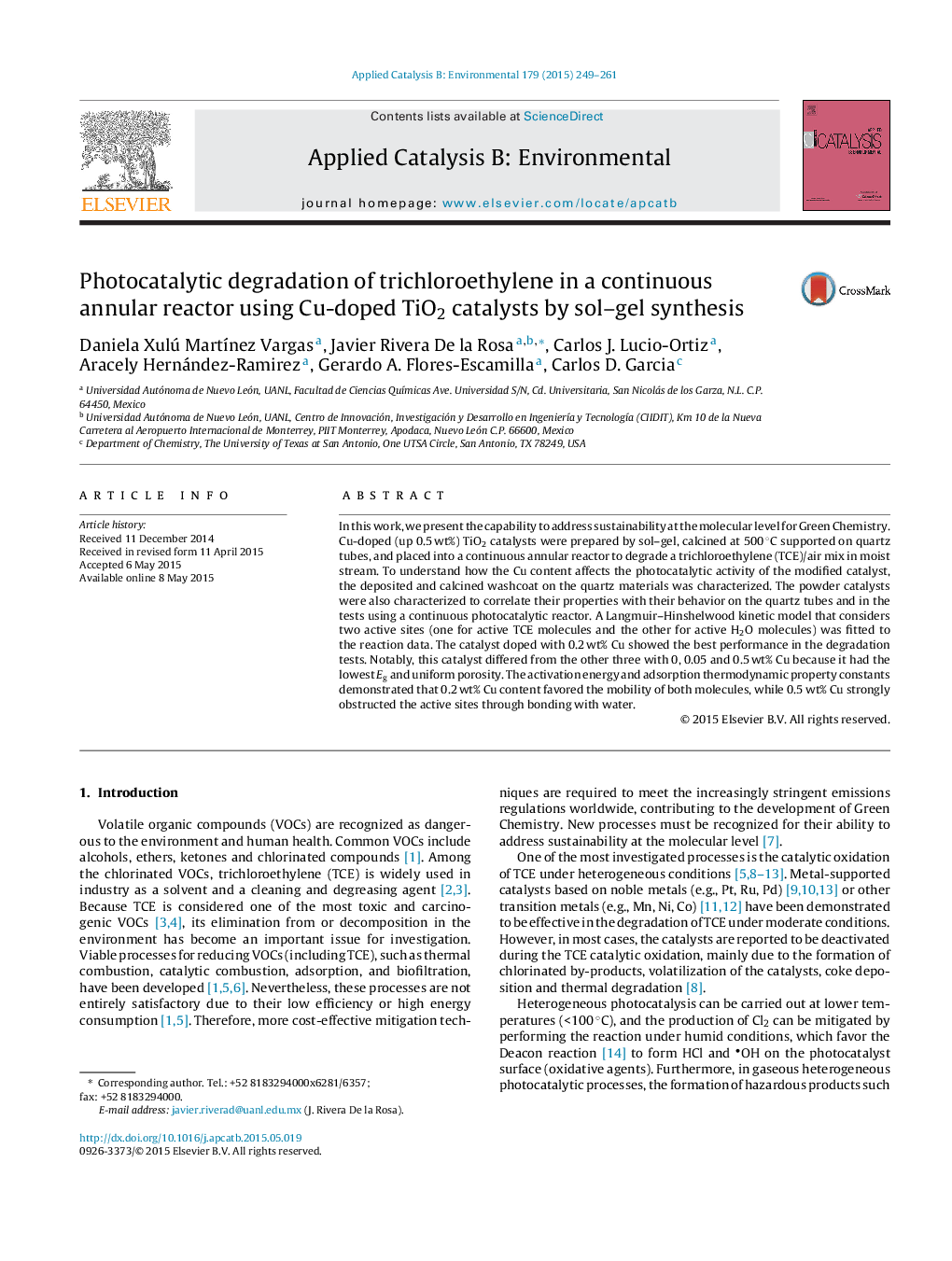| Article ID | Journal | Published Year | Pages | File Type |
|---|---|---|---|---|
| 45455 | Applied Catalysis B: Environmental | 2015 | 13 Pages |
•Trichloroethylene was degraded using a continuous annular photocatalytic reactor.•0.2 wt% Cu doped-TiO2 catalysts showed the best photocatalytic activity.•A Langmuir–Hinshelwood kinetic model, that considers two active sites was studied.
In this work, we present the capability to address sustainability at the molecular level for Green Chemistry. Cu-doped (up 0.5 wt%) TiO2 catalysts were prepared by sol–gel, calcined at 500 °C supported on quartz tubes, and placed into a continuous annular reactor to degrade a trichloroethylene (TCE)/air mix in moist stream. To understand how the Cu content affects the photocatalytic activity of the modified catalyst, the deposited and calcined washcoat on the quartz materials was characterized. The powder catalysts were also characterized to correlate their properties with their behavior on the quartz tubes and in the tests using a continuous photocatalytic reactor. A Langmuir–Hinshelwood kinetic model that considers two active sites (one for active TCE molecules and the other for active H2O molecules) was fitted to the reaction data. The catalyst doped with 0.2 wt% Cu showed the best performance in the degradation tests. Notably, this catalyst differed from the other three with 0, 0.05 and 0.5 wt% Cu because it had the lowest Eg and uniform porosity. The activation energy and adsorption thermodynamic property constants demonstrated that 0.2 wt% Cu content favored the mobility of both molecules, while 0.5 wt% Cu strongly obstructed the active sites through bonding with water.
Graphical abstractFigure optionsDownload full-size imageDownload as PowerPoint slide
